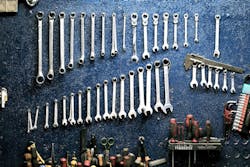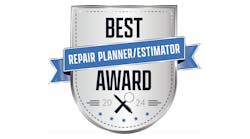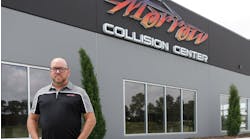The Walser Reconditioning Center team noticed concerning habits in the repair process. Customers were waiting many days for their vehicle to be repaired and used cars were completely being put on the backburner.
Thirteen years ago, the facility was built in St. Paul, Minn., at the same time that Steve Davis became the general manager for the center. The dealership built the center to seperate used car repairs from the rest of the service department.
Due to the overload of work coming in and not enough room to refine the repair process, the reconditioning center was moved to a new facility in 2018.
Even though the new center is in its beginning stages, Davis says he already has seen improvements simply in the numbers.
Inadequate Reconditioning
In January 2018, the shop produced only 40 cars per day from the reconditioning center and produced an average cycle time of 6–7 days.
And, due to the size of the facility, the repair team was not able to perform repairs for everything on site. Located on roughly nine acres of land and in a facility that was 25,000 square feet, the team did not have room for all the mechanical and collision repair work that needed to be done, including light body work, wheel repairs and interior repairs. While the existing space was large, the volume of work that the center needed to produce was even larger. The team had space for 400–500 parked vehicles, but needed to accommodate 300 more. The team went to three offsite storage facilities to house the cars and two offsite buildings to work on painting and interior repair of those cars, which Davis says was inefficient.
Packing Up and Moving
The first step to fixing some of the “roadblocks” in the process was to move into a larger facility, Davis says.
The shop moved from St. Paul, to an 85,000-square-foot facility in Eagan, Minn. While the process was not easy, Davis says that, since the move to a facility that accommodates all the work at one time, including the wheel repairs, interior repairs and light body work, the facility produces on average of roughly 45–50 cars per day. Davis also hopes that the new building will help lower the cycle time.
“Hopefully, in the next few months we’ll get that down to four to five days,” Davis says. “At least, that’s our goal.”
Before, the shop could accommodate 140 employees and now it can hold up to 160 staff members.
Improving Workflow
After addressing space concerns, Davis looked to his operations to find places to improve. Now, Davis is refining the process in the facility by cross-training all of his employees, apart from the technicians. Davis brings in-house trainers from the dealerships’ in-house training resources and trains the staff internally. The technicians are not trained to help in other areas because they have a unique skill set that takes longer to acquire, he says.
“We want a more consistent product for the dealership,” he says. “If the product and the quality is consistent when it is delivered to the dealerships, then it takes the stress off their hands and they’re able to focus on customer-pay vehicles.”
Another aspect that Davis took a closer look at was the actual process itself. The Walser Reconditioning Center has a clearly step-by-step approach for reconditioning:
-
The used vehicle goes through an “initial shakedown and teardown” of the vehicle—mechanical safety inspection, any repair including wheel repairs, interior repairs, touch-ups, windshield repairs, heavy-duty bumper repair, and paintless dent repair.
-
Then, the vehicle gets moved into the detail portion of the process.
-
The “final product area” is where the team inspects the vehicle for a second time in order to make sure the repairs were done correctly.
-
The car goes to the photo area and then is shipped to the dealership, Davis says.
Evolving the Process
Davis says one takeaway he has learned through being a part of moving the facility is that a bigger facility with a refined repair process helps him focus his attention on improving other aspects of the center.
For example, he is learning how to use an electronic reconditioning software to improve vehicle flow through production. In his years as parts director and fixed operations director, he discovered that always delivering information via paper can be time-consuming and misses some important details, he says.



